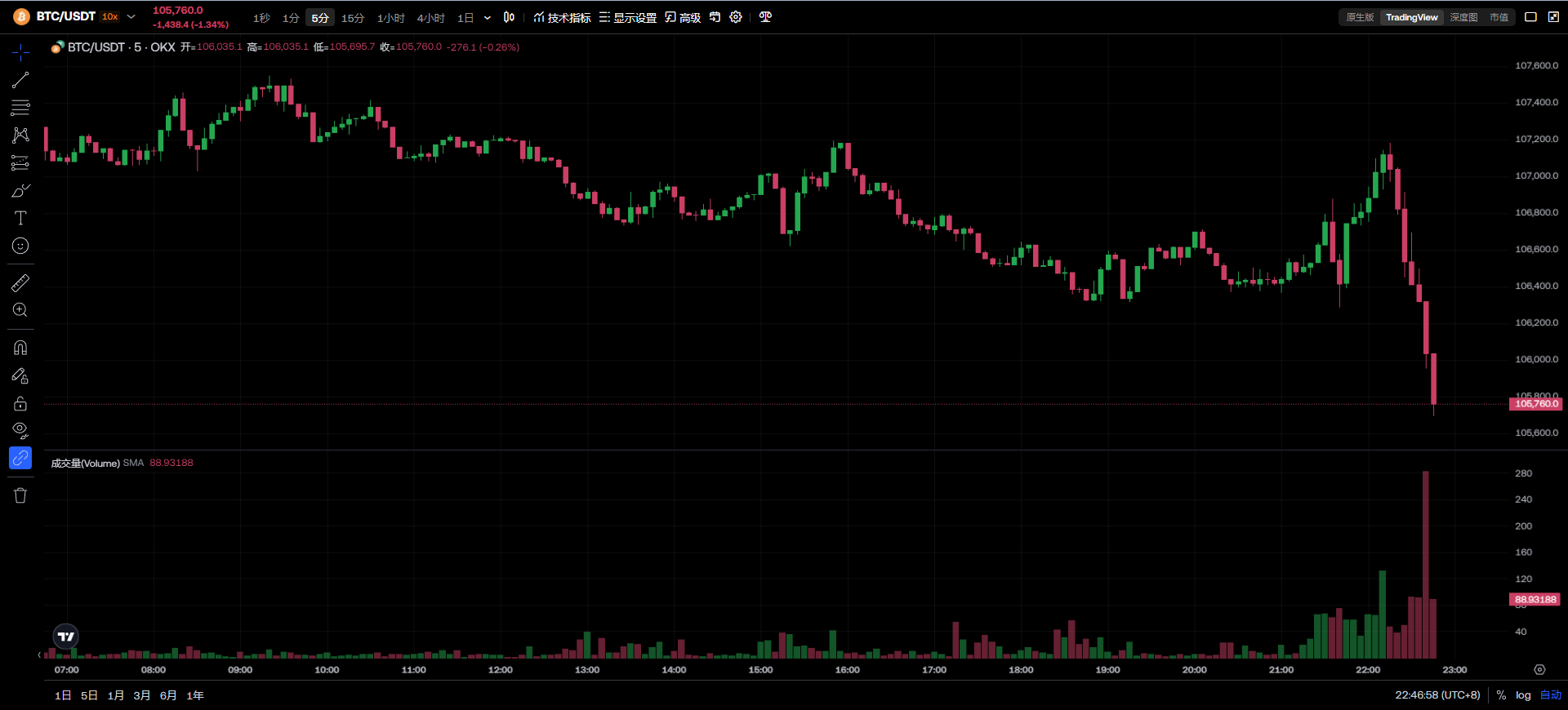In the first half of this year, Bitcoin was initially stimulated by Trump's inauguration as the US President, surging to $100,000, but subsequently dropped below $75,000 due to US tariff policies. After the tariff impact slightly weakened, the conflict between Israel and Iran once again intensified crypto market volatility, making it a roller coaster ride.
However, as of July 1st, Bitcoin's price temporarily remained above $105,000, with the current price at $105,844, down 1.37% in the past 24 hours.

Analyst: Technical Indicators Suggest Bitcoin Will Rise
In this context, CoinDesk senior analyst James Van Straten noted on July 1st that Bitcoin's 200-week simple moving average (200WMA) has risen to $49,223, just a step away from the psychological level of $50,000. During the bear market of 2022-2023, this moving average was only $25,000, nearly doubling in two years. Meanwhile, Bitcoin's 200-day moving average (200DMA) is currently at $96,246, successfully holding support despite a rapid pullback in June. Therefore, James Van Straten pointed out: "When the 200-week moving average maintains a 45-degree upward angle, it often signals the end of the Crypto Winter."
Notably, historical major drops in 2015 at $200, 2018 at $3,000, and 2020 at $5,300 all stabilized around the 200WMA, making this line an important indicator of market sentiment.
Bitwise: Still Optimistic About Bitcoin Reaching $200,000 by Year-End
According to The Block's report, Bitwise Investment Director Matt Hougan maintained the target price of "$200,000 for Bitcoin in 2025" in the latest client report. He and Research Director Ryan Rasmussen wrote in the report:
Strong ETF inflows, growing demand from asset management companies, and the US establishing strategic Bitcoin reserves collectively pushed Bitcoin to a historical high in May this year.
The progress of crypto legislation, continuously growing institutional demand, and stablecoin adoption have created a strong environment for further growth.
In summary: We maintain our BTC $200,000 prediction because institutional investor demand for BTC is simply too large.
However, the report expressed less confidence in Ethereum (ETH) and Solana (SOL) creating new highs this year. They noted that macroeconomic uncertainty is slowing the bull market pace, with funds tending to flow towards "hardcore value" assets, giving Bitcoin a relative advantage:
We lack confidence in ETH and SOL, but hope that the growing market interest in stablecoins, ETF approvals, and the emergence of ETH and SOL asset management companies could significantly boost prices.






